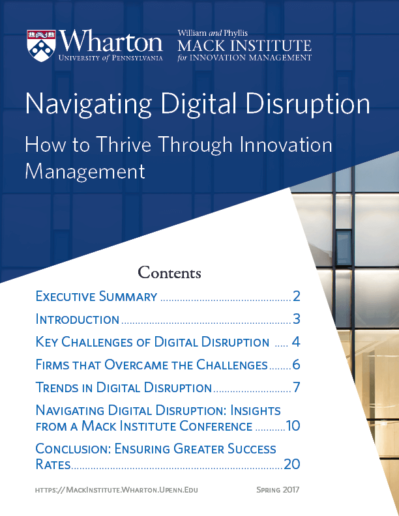
Surviving disruption from digital acceleration requires continuous innovation.
To help navigate today’s rapid changes in technologies and business models, the Mack Institute presents a new white paper recommending ways to ensure greater success rates among a firm’s innovations.
Download the White Paper



